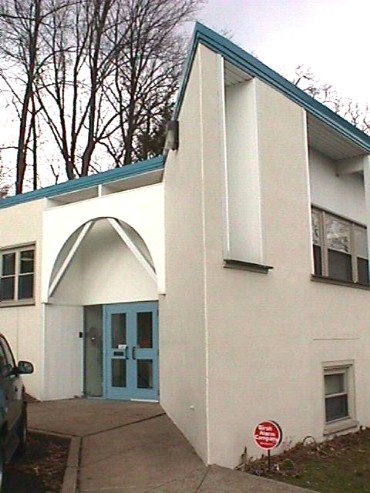
| |
Venturi and Short, Headquarters for the North Penn Visiting Nurses' Association (Ambler, PA: 1960-63).
Some Agonizing Thoughts about Maintenance and Preservation Concerning Humble Buildings of the Recent Past
Focusing on Our First Built Project--Only Some Thirty Years Old!
Written 1993
I write about our North Penn Visiting Nurses Association Building. Over the years it has generally not been appreciated. It was poorly maintained and then there was the offensive addition in back--I'm afraid the original director, whose name I forgot, did not like her building very much. The building was recently purchased by a CPA firm. They have further renovated it without respect for the original quality of its design--although the head of this firm, when the artistic significance of this building was revealed to him by a noble local architect, expressed sympathy and understanding concerning the situation.
I love this, my first built building, and I feel it has genuine artistic and historical significance--despite its modest size--involving elements that now seem everyday, because of their subsequent influence on architecture of our time, but were original then. I refer to the use of ornament, abstract and symbolic, in the redundant juxtaposed ornament over the entrance opening, as well as the hierarchical scale of this opening in relation to the scale of the windows and to the molded borders around the windows in the front: at the time a dear architect-friend put his arm over my shoulder and said "Bob, you never decoratively border windows." and ten years later he did it himself. But especially new was the overall shape of the building with its particular angles that makes of it a fragment as well as a whole as it inflects, by means of its angled shape, toward the parking court--thereby making the parking lot a positive element in the composition as a whole.
|
| |
This latter quality of a building that occupies outside space but also molds outside space was especially original for its time when orthodox Modern principles of architecture held sway: then you designed "from the inside out," never the other way round. It is interesting to note that the National Gallery extension on the Mall in Washington by my friend I. M. Pei, which contains similar angular forms, was preceded by our little building--as was the inflected form of the pavilions that distinguish Louis Kahn's justly renowned Salk Center in La Jolla.
I have just read of Philip Johnson's Four seasons Restaurant's being placed on the National Register of Historic Buildings: if I may say so, this little work, whose cost was a fraction of that grand work, is more significant in terms of its originality and quality.
Robert Venturi, Iconography and Electronics upon a Generic Architecture (Cambridge, MA: The MIT Press, 1996), pp. 131-2.
|
| |
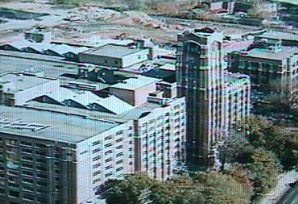 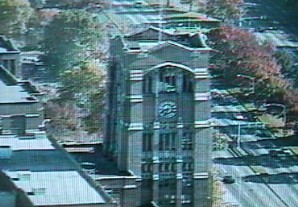
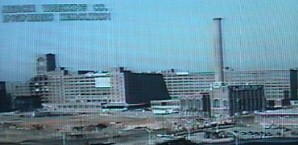 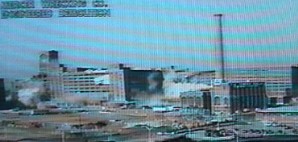 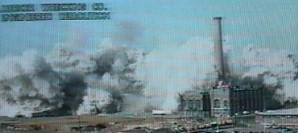
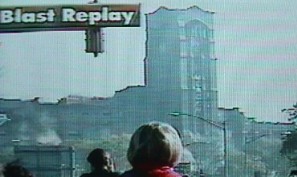 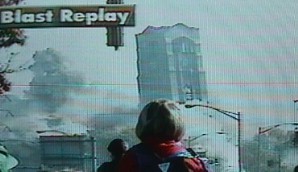
| |
Sears & Roebuck Merchandise Warehouse (Philadelphia, PA: 1920s; imploded 30 October 1994).
2002. 03.23 13:41
Re: what a blast
I was in NYC Saturday, 29 October 1994. After having dinner in the Village (I think) with Ron Evitts, I drove home. As I passed the Sears Tower on the Boulevard, the song playing on my car cassette player was by Brian Ferry and the lyrics were "here today, gone tomorrow"--I'm not kidding.
The next morning I got up about 8:15. I set the VCR to record the local news coverage of the approaching implosion, and around 8:30 I set off on foot for the site. All 12 lanes of Roosevelt Blvd. were closed to traffic, and it was kind of cool to just walk in the middle of the "boulevard" without cars. There were others also walking in the direction of Sears.
The implosion was set for 9:00 am, but actually happened about 9:08. It was all over in a matter of seconds. By the time the 14 story clock tower began to move, most of it was already engulfed in a huge cloud of dust. And when the clouds dissipated, there was just nothing there--a very strange phenomenon of absence manifesting itself, a very paradoxical presence of absence.
The local news van that recorded the event was right next to where I was standing to watch the implosion, so when I went back home and watched the recording of the event, it was neat to see the whole thing from exactly the same angle that I saw it in person.
Several square miles of neighborhoods immediately north of the Sears complex were covered with about a 1/2 inch of dust after the all the windswept dust clouds settled.
The site is now a huge shopping center/parking lot, like hundreds of recent shopping centers in the US and beyond--HOME DEPOT, OLD NAVY, STAPLES, PEP BOYS, DICK'S, HAIR CUTTERY, etc., etc., etc. Like when I was younger, I still do a good bit of my shopping at that place.
Regarding what may seem to be my fascination with all this, simply put, it's not everyday that a world record implosion happens in your own neighborhood.
Steve
ps
The World Trade Center towers are so far the only buildings that have held the title of world's tallest as well as the title of world's largest building implosion. The Spire of the Cathedral of Beauvais (1247-1568), once the tallest building in the world and the first building to exceed the height of the Great Pyramid, collapsed in 1573.
|
| |
2002.01.11 13:21
see the UNITED STATES
Even in all its decaying glory, the SS UNITED STATES is nonetheless the most impressive feature of Philadelphia's waterfront today.
Images of the SS UNITED STATES inaugurate wqc/tempobliviopolis.
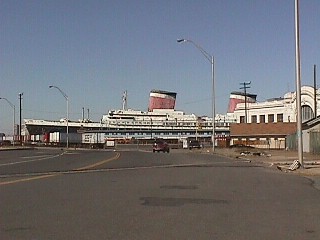
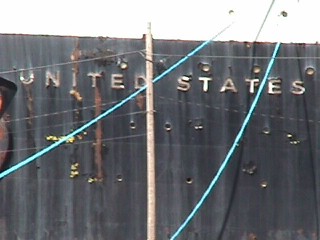
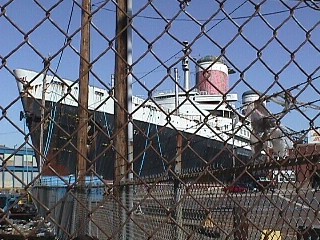
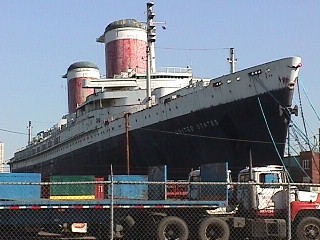
There is also www.ss-united-states.com.
I saw the SS UNITED STATES yesterday while taking my brother to see it for what was his first time in 47 years. Otto and my parents came to the United States on the United States. The images at Quondam are from 19 March 2001.
|




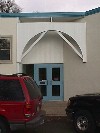

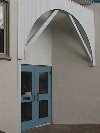
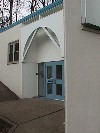

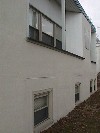


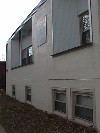 Images taken 8 March 2001.
Images taken 8 March 2001.










